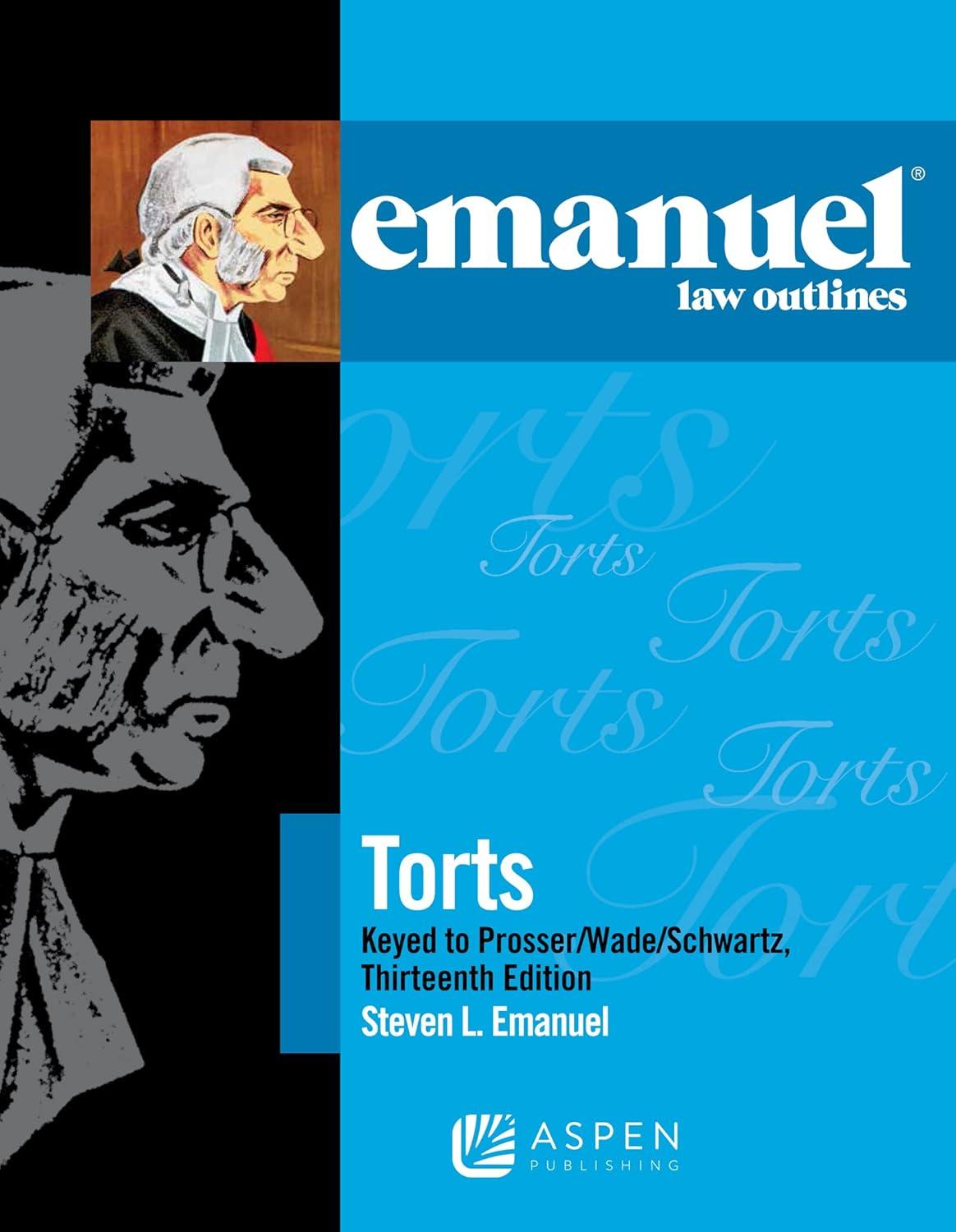QUESTION 3: In the early 1990s the Dow Drug Company developed a compound called XYZ, which its
Question:
QUESTION 3: In the early 1990’s the Dow Drug Company developed a compound called XYZ, which its researchers hoped would prove effective in treating certain unusual blood diseases. By 2004, after experimentation with almost a thousand human subjects, the drug was approved by government authorities for distribution to only a few specially qualified physicians, who would themselves inject it into patients.
Dr. Mary Jones, a specialist in blood diseases who practices in Ames City, is qualified to administer the drug. She became fully apprised of the drug’s potentialities and side effects through the instructions sent to physicians by Dow with the drug. The instructions noted that short-term adverse side-effects were judged to be relatively slight — nausea, light-headedness, and blurring of vision, all normally expected to pass within five to ten hours after the drug was injected. The blurring of sight was related by experimenters to very slight hemorrhaging of the retina, and there was thought to be a theoretical possibility (not realized with any experimental subject) of more serious hemorrhaging and eye damage, particularly after repeated injections. Also, a handful of the experimental subjects reported continued nausea lasting on and off over a period of months, even from a single injection.
Early in 2005 Fred Smith, a 32-year-old construction worker, was referred to Dr. Jones by his family physician. Smith was afflicted with Price’s syndrome, a rare condition of the blood for which no recognized treatment was available. Smith complained of characteristic symptoms of the Syndrome: a constant dull aching throughout his body and phases of debilitating listlessness which interfered with his work so much that he feared he might be fired.
After a thorough examination, Dr. Jones explained that there was no recognized treatment for his illness but added that a new drug just on the market might conceivably prove to be the answer, though no one could tell for sure. Smith, stating that he didn’t want to spend the rest of his life feeling poorly and uncertain about employment, concluded that if the doctor thought this drug might work, he would try it. Dr. Jones replied that “on balance” she thought it worthwhile to go ahead. She injected Smith with the recommended dose of XYZ. Dr. Jones then said that, though the side-effects of the drug were apparently limited to “some mild discomfort that passes in a matter of hours,” the drug still was
“experimental”, and therefore they should monitor its effects closely. Smith agreed to come back for a check-up the following week.
That night Smith was troubled by nausea, but he felt fine the next morning as he set out in his car to drive to the construction site where he worked. While on a little-travelled three-lane highway, Smith rounded a curve and saw that his lane was blocked by a stopped car about 50 yards ahead.
The car belonged to Elmer Brown, a senior official of the Ames City Health Department. Brown was to deliver the main address in one hour at a special state-wide meeting of health officers called to discuss the grave public health problems caused by recent heavy rains and flooding. His car’s right rear tire had blown out. Brown’s travelling companion had advised Brown to pull off the road before trying to change the tire, but Brown had rejoined that the side of the road was so muddy that they would probably get stuck there. As Smith approached, Brown was working furiously to change the tire, knowing that his chances of arriving on time for his lecture were decreasing.
When Smith saw the Brown car he maintained his speed but started to pull out into the middle lane to pass. There was no on-coming traffic. But at that moment Smith suddenly suffered serious retinal hemorrhaging and near total loss of vision. He hit the brakes but couldn’t control direction or avoid a glancing collision with Brown’s car.
Both cars were damaged in the collision, and both Smith and Brown were hospitalized with fractures. Tests showed that Smith’s impairment of vision was irreversible.
Discuss the tort actions that Smith and Brown might bring. The State of Ames, where the relevant events occurred, is a common-law jurisdiction with respect to auto accidents; the Ames courts follow the rule of “pure” (not “partial”) comparative negligence.
Step by Step Answer:







